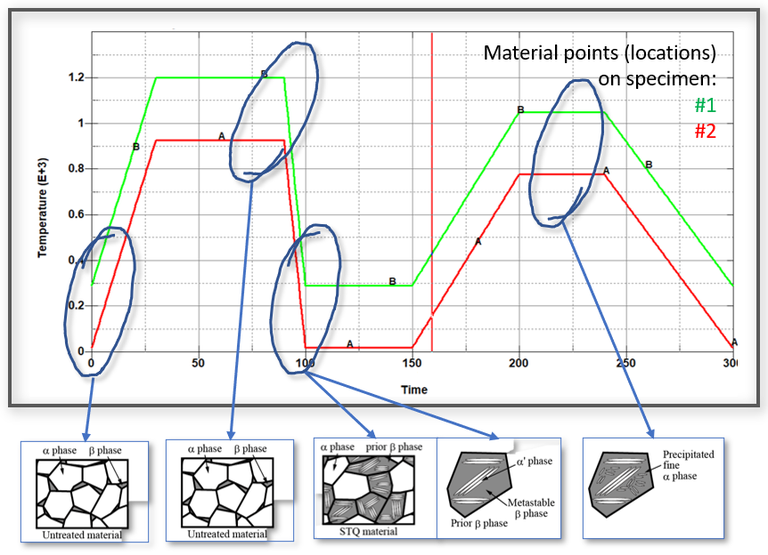Titanium Solution Treated and Rapid Quenching (TISTRAQ)
The main objective of the joint project TISTRAQ (TItanium Solution Treated & RApid Quenching), which is funded by the BMWi starting 1.7.2020 as part of the German government's aviation research program, is the development of a forming process for energy- and material-efficient production of sheet metal parts made of α+β titanium alloys, especially the alloy Ti-6Al-4V, with increased mechanical properties by means of process-integrated heat treatment. For the first time α+β titanium alloys are heated resistively, quench formed with cooled tools and subsequent short time artificial aging. In addition, the very short process time (STQ: short time quenching) aimed at should prevent the formation of an oxygen-enriched brittle surface layer as far as possible. The forming of α+β titanium alloys with process-integrated heat treatment leads to an ecologically and economically more efficient production of titanium structures compared to the current state of the art. At the same time, the improved mechanical properties result in a high lightweight construction potential. The STQ process thus offers great potential for increasing performance and efficiency in aerospace applications.
The process route combines the press hardening process successfully used in automotive series production of boron steel parts with the known strengthening mechanism of aluminum alloys. Together with the project partners, the process for titanium alloys is to be developed and it is to be proven that the process is controllable by simulation and leads to a permanent increase of the characteristic mechanical properties of α+β titanium alloys. DYNAmore takes over the simulative parts including prediction of the transformed microstructure in the STQ process, as well as mapping and prediction of the corresponding local mechanical properties of the downstream phenomenological constitutive model. With this goal achieved, the potential of the process is to be determined by optimizing the process within the simulation environment only.
The work plan provides for various experimental investigations on the cooling behaviour of TiAl6V4 at different cooling rates, as well as mechanical investigations of the generated microstructure. Based on the knowledge gained, DYNAmore develops a thermomechanically coupled simulation model, which is able to describe the entire forming process of a component. The local properties of the material are described with a model that describes the phase transformation kinetics, depending on local deformation and temperature history. In addition to the description of the model in principle, its implementation and validation, DYNAmore MCC provides extensive calibration services in order to meet the high demands on the prediction capability.
The figure illustrates schematical the temperature route during the process and the resulting changes of the microstructure which have to been incorporated in the process simulation.
